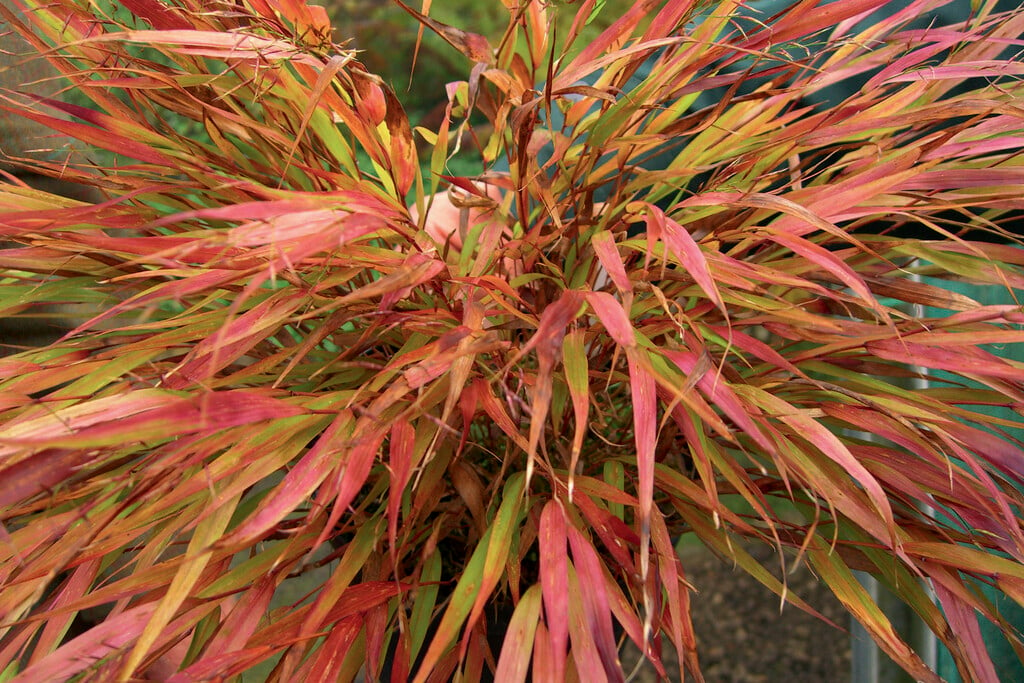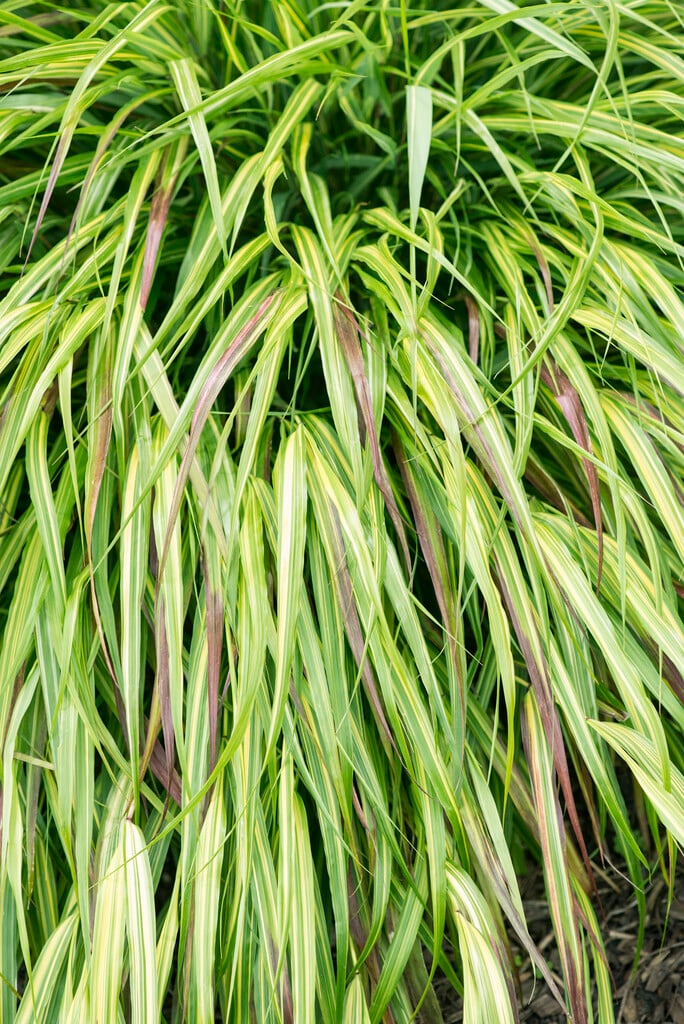Hakonechloa macra 'Nicolas'
Japanese forest grass 'Nicolas'
A slow-growing, clump-forming deciduous to semi-evergreen grass with green leaves turning to excellent autumn colours of orange and reds. Pale green flowers are produced from summer to early autumn.
Size
Ultimate height
0.1–0.5 metresTime to ultimate height
2–5 yearsUltimate spread
0.1–0.5 metresGrowing conditions
Moisture
Moist but well–drainedpH
Acid, Alkaline, NeutralColour & scent
| Stem | Flower | Foliage | Fruit | |
| Spring | Green | |||
|---|---|---|---|---|
| Summer | Green | Green | ||
| Autumn | Green Orange Red | |||
| Winter | Brown |
Position
- Full sun
- Partial shade
Aspect
East–facing or North–facing or South–facing or West–facing
Exposure
Exposed or Sheltered Hardiness
H7Botanical details
- Family
- Poaceae
- Native to GB / Ireland
- No
- Foliage
- Deciduous or Semi evergreen
- Habit
- Clump forming
- Genus
Hakonechloa is a deciduous perennial grass forming a compact tuft of arching stems bearing linear leaves, with arching flower panicles in late summer and autumn
- Name status
Accepted
How to grow
Cultivation
Easy to grow in moist , well drained soil in sun or shade. Colour is brighter in sun
Propagation
Propagate by division when clumps are big enough
Suggested planting locations and garden types
- City and courtyard gardens
- Cottage and informal garden
- Low Maintenance
- Flower borders and beds
- Ground cover
- Underplanting of roses and shrubs
Pruning
Cut back to the base in late winter or early spring
Pests
Generally pest-free
Diseases
Generally disease-free
Get involved
The Royal Horticultural Society is the UK’s leading gardening charity. We aim to enrich everyone’s life through plants, and make the UK a greener and more beautiful place.

